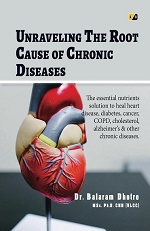Introduction
Coronary artery disease (CAD) stands as a leading cause of death worldwide. It quietly damages the heart and can strike without warning. Every year, millions suffer heart attacks caused by blocked arteries. Knowing how CAD develops helps us stay ahead and protect our hearts. In this article, you’ll learn about the process of CAD, how it causes emergencies, and ways to keep it at bay.
Table of Contents
What Is Coronary Artery Disease?
Definition and overview
Coronary artery disease happens when the arteries that feed blood to your heart become narrow. These arteries are vital because they bring oxygen and nutrients your heart needs to beat. When narrow, your heart gets less blood, which can lead to chest pain or worse.
Causes and risk factors
Many things raise your risk of developing CAD. Age is one factor—risk increases as you get older. Genetics can also play a role. Lifestyle habits like smoking, eating unhealthy foods, and not moving enough make things worse. Conditions like high blood pressure, high cholesterol, and diabetes increase the chances of buildup inside arteries.
Impact on heart health
When arteries narrow, the heart struggles to get enough oxygen-rich blood. This can cause chest pain called angina. If a clot suddenly blocks blood flow, a heart attack can happen. Over time, CAD may weaken the heart and lead to heart failure, making daily life harder.
The Development of Coronary Artery Disease
Atherosclerosis: The primary process
Most CAD starts with a process called atherosclerosis. Tiny deposits of fat and other substances build up inside the artery walls. These deposits grow slowly, narrowing the arteries bit by bit. This process can take years before symptoms appear.
Role of cholesterol and inflammation
Low-density lipoprotein (LDL) cholesterol is the main culprit. It sticks to the walls of arteries, forming fatty plaques. In addition, inflammation caused by other health issues can worsen the problem. Inflammation weakens plaques, making them unstable and more likely to rupture.
Progression of plaque buildup
At first, plaques look like small streaks or spots called fatty streaks. Over time, these develop into fibrous plaques, which are thicker and more stable. Sometimes, calcium deposits make these plaques even harder. This hardened buildup reduces blood flow further and can cause blockages.
What Happens During a Coronary Artery Blockage?
Plaque rupture and thrombosis
Unstable plaques can rupture out of nowhere. When this happens, blood cells rush to the site and form a clot, called a thrombus. This clot can quickly block the artery completely, stopping blood flow to the heart.
Heart attack (Myocardial Infarction)
When a coronary artery is fully blocked, part of the heart tissue gets no oxygen. This causes a heart attack, also called a myocardial infarction. If blood flow isn’t restored fast, that part of the heart tissue dies. The longer the delay, the more damage occurs.
Other complications
A sudden loss of blood flow can also cause irregular heartbeats, or arrhythmias. In some cases, a severe blockage leads to sudden cardiac arrest, where the heart stops pumping. Long-term, blocked arteries weaken the heart, leading to heart failure.
Symptoms and Diagnosis of Coronary Artery Disease
Common symptoms
Many people with CAD feel chest pain called angina. Others experience shortness of breath or fatigue, especially during activity. Some may notice no symptoms until a heart attack hits. Knowing your body helps catch issues early.
Diagnostic tests and procedures
Doctors use various tests to detect CAD. An ECG shows the heart’s electrical activity. Stress tests check how the heart responds to exertion. If needed, doctors may perform coronary angiography—a dye test that shows blockages clearly. Imaging tools like echocardiography help assess heart function.
Importance of early detection
Finding CAD early means you can start treatment to prevent heart attacks. Risk assessments, blood tests, and regular checkups help identify issues before they become emergencies.
Prevention and Management Strategies
Lifestyle modifications
Simple changes make a big difference. Eating a heart-healthy diet with plenty of fruits and vegetables lowers cholesterol. Regular exercise helps keep your arteries clean. Quitting smoking reduces inflammation and plaque growth. Maintaining a healthy weight and managing stress also help protect your heart.
——————————————————————————————————————————-
ROOT CAUSE OF CHRONIC DISEASES
Supplements like Lypro-C address the root cause of coronary artery disease.
Medical interventions
Medications like statins lower bad cholesterol, while antiplatelet drugs prevent harmful clots. Beta-blockers help reduce the heart’s workload. When needed, procedures like angioplasty and stenting open blocked arteries. In some cases, surgeons perform bypass surgery to restore blood flow.
Monitoring and ongoing care
If you have risk factors, regular doctor visits are vital. The Blood pressure and cholesterol levels must stay in check. Following your treatment plan and avoiding risky habits keeps you healthier longer.
Conclusion
Coronary artery disease develops silently over the years through plaque buildup inside arteries. When plaques rupture or block blood flow, severe heart problems happen quickly. That’s why lifestyle choices and medical care are critical. Staying aware of your heart health and acting early can prevent emergencies. Talk to your healthcare provider about screening and personalized steps to protect your heart from this deadly disease.


